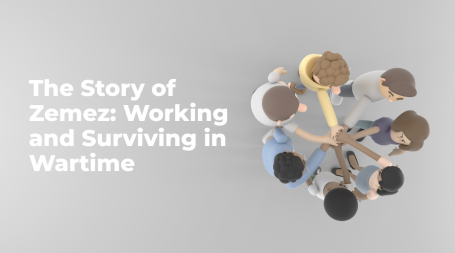People’s access to information on the internet has been revolutionized as a result of the widespread availability of mobile devices such as smartphones, tablets, and other mobile gadgets in the modern day. It has become more critical than ever before for websites to provide a seamless and uniform user experience across all platforms. This is because people are increasingly exploring the web on a varied range of screen sizes and devices. To accomplish this objective, responsive design is essential. This design ensures that websites can smoothly adjust to the specific characteristics of each device, ranging from desktop computers to tablets and smartphones. Through the course of this essay, we will investigate the significance of responsive design and the role it plays in improving the user experience across all devices.
1. Understanding Responsive Design
“The term “responsive design” refers to a method of web development that enables websites to dynamically adjust themselves to multiple screen sizes, resolutions, and orientations. By utilizing flexible grids, fluid layouts, and media queries, responsive design eliminates the need to create distinct versions of a website for desktop and mobile devices. This allows for content to be rendered in the most effective manner possible regardless of the screen size. By emphasizing adaptation and flexibility, responsive design makes it possible for websites to offer a user experience that is consistent across all platforms. This is true regardless of whether consumers are accessing the website from a desktop computer, a smartphone, or a tablet.” – Richard Skeoch, Director at Hyperion Tiles
2. Catering to the Mobile-First Era
“Because mobile devices are responsible for an ever-increasing proportion of internet traffic, catering to mobile users has become an extremely important goal for companies that own websites and those who design websites. The use of responsive design enables websites to provide priority to mobile users by ensuring that content is easily accessible and navigable on proportionally smaller screens. Businesses can reach a larger audience and create a positive user experience for mobile users if they embrace a mobile-first approach to design. This, in turn, will ultimately drive engagement and conversions.” – Tim Parker, Director at Syntax Integration
3. Improving Accessibility and Inclusivity
“When it comes to enhancing accessibility and inclusivity for all users, regardless of the device they use or the surfing preferences they have, responsive design is an extremely important factor. By ensuring that websites are functional and navigable on a wide range of devices, including assistive technologies such as screen readers, responsive design contributes to making the internet more accessible to individuals who have impairments. Not only does this commitment to inclusion increase the quality of the user experience for all visitors, but it also communicates a commitment to diversity and equality in the digital environment.” – Gerrid Smith, Chief Marketing Officer at Joy Organics
4. Enhancing SEO Performance
“To improve the efficacy of search engine optimization (SEO) and to drive organic traffic to websites, responsive design is also vital. The search results provided by search engines such as Google give preference to websites that are optimized for mobile use. This means that responsive websites are more likely to rank higher in the results of mobile search searches. In addition, responsive design eliminates the need for distinct URLs for mobile and desktop devices, which helps to prevent problems such as duplicate content ensures that all incoming links contribute to a single, unified URL structure, and eliminates the need for separate URLs. Through the use of best practices for responsive design, businesses can enhance their exposure in search engine results and generate a greater amount of organic traffic to their websites.” – Ben Flynn, Manager at Homefield IT
5. Streamlining Development and Maintenance
“A substantial number of advantages are offered by responsive design in comparison to more conventional approaches to web design, particularly in terms of creation and maintenance. Developers can work with a single set of code that dynamically adapts to multiple platforms thanks to responsive design. This eliminates the need for them to create and maintain separate codebases for the desktop and mobile versions of a website. This makes the process of development more streamlined, decreases complexity, and limits the amount of time and resources that are required to maintain the website over time. This eliminates the need for separate updates to be made for the mobile and desktop versions of the website. Additionally, responsive design guarantees that upgrades and modifications are applied universally across all devices.” – Holly Cooper, Marketing Manager at LUCAS PRODUCTS & SERVICES
6. Boosting Conversions and Revenue
“For websites to be successful in generating conversions and money, it is essential to provide a seamless and user-friendly experience. With responsive design, visitors can navigate and interact with information on any device with ease, which reduces the amount of friction that they experience and increases the likelihood that they will convert. It is the responsibility of responsive design to guarantee that the user experience is consistent and easy to understand across all touchpoints, regardless of whether the user is exploring product pages, filling out forms, or making purchases. Businesses can maximize their income potential and capitalize on opportunities to engage and convert visitors, regardless of the device choices of those visitors, if they optimize for conversions across all devices.” – Cameron Holland, Marketing Director at GB Foam
7. Adapting to Future Technologies
“The use of responsive design ensures that websites will continue to be adaptive and future-proof with the ongoing development of technology. With the growth of new devices and screen sizes, such as foldable smartphones and wearable gadgets, responsive design offers a foundation for ensuring that websites continue to be accessible and functional across a variety of evolving technologies. Businesses can future-proof their websites and ensure that they continue to be relevant and competitive in the ever-changing digital market by adopting the concepts of flexible design.” – Adam Crossling, Marketing & New Business Director at zenzero
8. Fostering Brand Trust and Loyalty
“As a last point of discussion, responsive design is an essential component in the process of cultivating trust and loyalty among users. Having a website that offers a user experience that is uniform and smooth across all devices is a positive reflection on the brand since it demonstrates a dedication to the satisfaction of customers and the usability of the website. By investing in responsive design, businesses have the opportunity to increase return visits and engagement from their audience, as well as create trust with them. Additionally, responsive design helps to guarantee that users have a great experience with the brand, regardless of how they choose to visit the website. This serves to reinforce brand loyalty and facilitate the development of long-term relationships with customers.” – Tim Parker, Director at Syntax Integration
Conclusion:
In a world that is becoming more interconnected, responsive design is very necessary to guarantee a seamless and consistent user experience whenever they are using any device. By giving priority to flexibility, adaptation, and accessibility, responsive design makes it possible for websites to reach a larger audience, improve their visibility in search engines, simplify the process of development and maintenance, increase conversions and revenue, adapt to developing technologies, and cultivate trust and loyalty in their brand. Even though the digital landscape is constantly shifting, responsive design will continue to be an essential component of efficient web development. This will enable businesses to maintain their competitive edge and provide excellent user experiences in a digital landscape that is constantly evolving.















